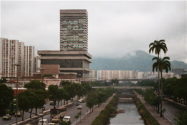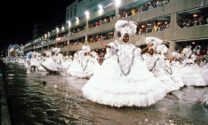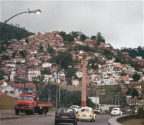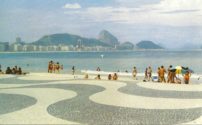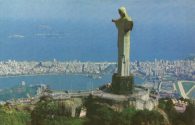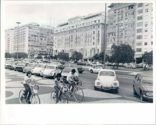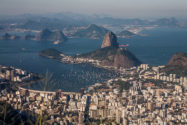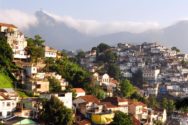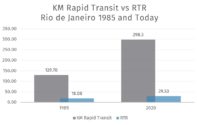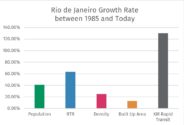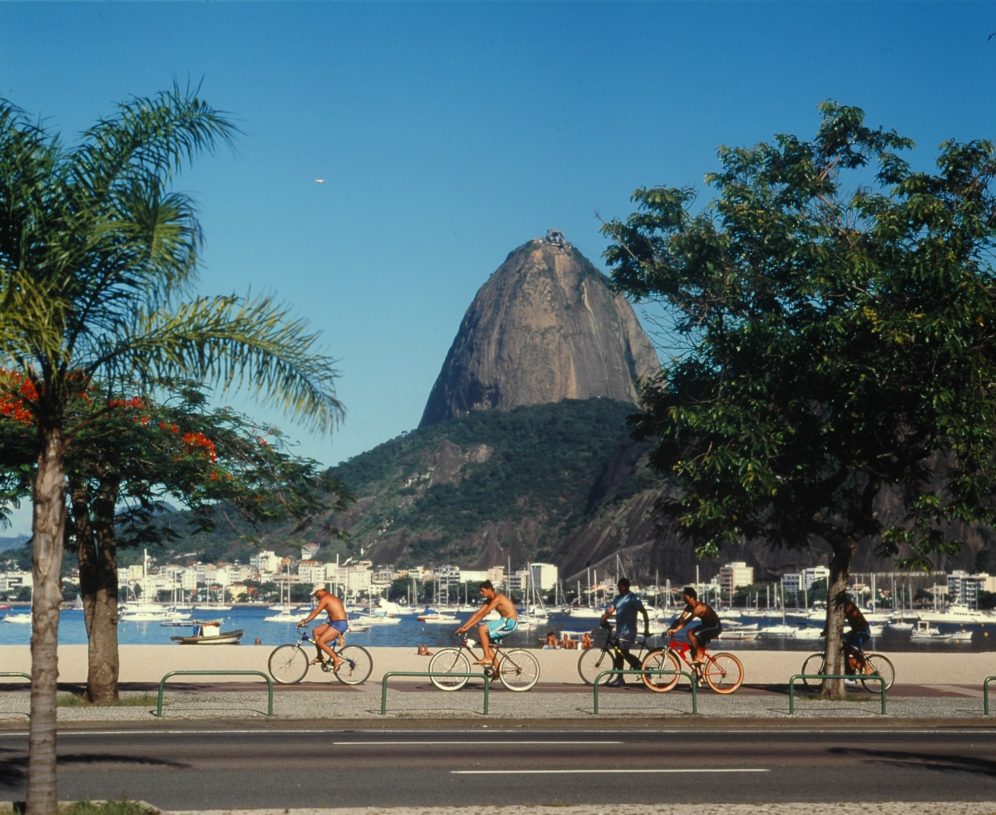
March 09, 2020
Rio de Janeiro: 1985 and Today
On the Anniversary of ITDP’s 35th Year, Transport Matters will be publishing a series of articles about cities that ITDP has worked in, comparing them from 1985 and today. The article in full can be found in the Sustainable Transport Magazine. Read previous articles about Buenos Aires here and Chennai here.
In 1985, Rio de Janeiro was coming out of two decades of military rule, and experiencing a surge growth. Older parts of the city were being demolished and rebuilt, and the city as it is today was taking shape. The city had the beginnings of formal a transit system, with the oldest commuter train in Brazil, and the first line of the Metro opened in 1979. Since then, the Metro has grown to include 3 lines and 60 kilometers in length, with a daily ridership of 830,000. But where Rio has most excelled is in building out their BRT system in an impressively short period of time, and now has four BRT corridors covering 168 kilometers and major infrastructure projects have greatly increased the access Cariocas had to their city.
Rio de Janeiro Before
Click below photos to enlarge
These were initiated by two major events in the city: the 2014 World Cup and the 2016 Olympics. In addition to the BRT, the city tore down an elevated highway to restore the historic Porto Maravilha for pedestrians, launched a light rail, and opened a pedestrian mall on Rio Branco Avenue in the city center, among other projects. The first of these, TransOeste, opened in 2012, and immediately made apparent how great the need was for mass transit options in far-flung areas of the city. As the cost of living in the city has soared, people have been pushed further and further away, but still need access to the city to make a living. This, combined with a car-centric approach to suburban planning, and lack of transport option, has resulted in hours of commute time at a disproportionate cost, severely limiting the options for a majority of people. TransOeste’s direct route saved as much as three hours for some commuters, but overcrowding and operations issues have persisted as the demand continues to overwhelm supply.
Rio’s commuters still spend a long amount of time in transit – people spend on average 19 minutes waiting for buses and ride for about 1 hour each way. The existence of wide urban highways encourage driving. Rio’s progress is inconsistent, but if harnessed effectively can move in the right direction.
Rio de Janeiro Today
Click below photos to enlarge
Rio de Janeiro in Numbers
To measure and study cities’ growth objectively, metrics were employed looking at population, density, transit. Kilometers of rapid transit is defined as rapid transit that meets the definition of BRT basics in the BRT Standard, in Rio de Janeiro kilometers of rapid transit grew from 129.7 in 1985 to 298.3 in 2018. While the kilometers doubled, this does not tell the whole story. Unfortunately, much of the work done on the BRTs stalled or ran into problems after the Summer Olympics of 2014. Today, Rio de Janeiro has inconsistent public transit service, leading to decreased ridership and longer commutes. One statistic included in these graphs is the Rapid Transit to Resident Ratio (RTR) which compares the population with the length of rapid transit lines – this number shows how well a population is served by rapid transit. While RTR has increased in Rio de Janeiro, the problems plaguing the BRT belay a larger structural problem that hopefully the city can address and solve.


